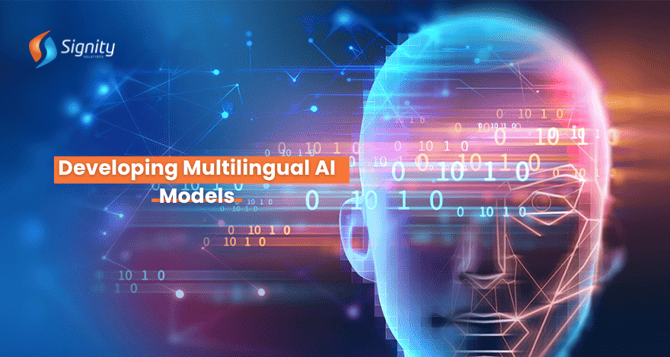Developing Multilingual AI Models for Global Applications
Creating AI models capable of processing multiple languages is crucial for global applications. Challenges include data diversity, language nuances, and resource intensiveness. Collaboration, data privacy, dynamic updates, monitoring, and user feedback integration are key considerations. Node.js facilitates building multilingual AI systems, promoting inclusivity and accessibility.

In an increasingly interconnected world, the demand for multilingual Artificial Intelligence (AI) models has grown significantly. Creating AI systems capable of understanding and processing multiple languages is crucial for global applications. In this article, we'll explore the challenges and solutions in developing multilingual AI models, along with detailed technical implementations using Node.js.
The Importance of Multilingual AI Models
Global businesses, applications, and platforms often cater to diverse linguistic audiences. Developing AI models that can comprehend and respond to users in multiple languages is essential for ensuring inclusivity, user satisfaction, and the broad accessibility of digital products and services.
Building Multilingual AI Models with Node.js
Let's explore the technical aspects of creating multilingual AI models using Node.js. For this example, we'll focus on a language translation system using a pre-trained model from a popular library, `translate-google.`
Node.js Implementation
1. Set Up Your Development Environment
Begin by setting up your Node.js development environment and installing the required packages.
2. Create an Express Server for Language Translation
Set up an Express.js server to handle requests related to language translation.
3. Run Your App
Run your Node.js server using the following command:
Your multilingual AI model for language translation should now be accessible at `http://localhost:3000/translate` or the specified port.
Challenges in Developing Multilingual AI Models
1. Data Diversity
Obtaining diverse and representative datasets for training models in multiple languages can be challenging.
2. Language Nuances:
Different languages have unique linguistic nuances, making it challenging to create models that understand the intricacies of each language.
3. Resource Intensiveness:
Training and maintaining models for multiple languages can be resource-intensive, requiring significant computational power.
4. Domain-Specific Language:
Some languages may have domain-specific terms and expressions that require specialized training data.
Considerations and Best Practices
1. Cross-Cultural Collaboration
Collaborate with linguists and native speakers to understand the cultural and linguistic nuances of each language.
2. Data Privacy
Ensure compliance with data privacy regulations, especially when dealing with multilingual datasets.
3. Dynamic Model Updates
Implement mechanisms for dynamic updates to accommodate changes in language patterns and usage.
4. Continuous Monitoring
Regularly monitor model performance across different languages and update as needed.
5. User Feedback Integration
Integrate user feedback mechanisms to improve model accuracy and language coverage.
Conclusion
Developing multilingual AI models is a crucial step toward creating global applications that cater to diverse linguistic audiences. By leveraging Node.js and integrating existing libraries, developers can contribute to the creation of AI systems that transcend language barriers.
As technology continues to advance, the development of sophisticated, multilingual AI models will play a pivotal role in shaping a more inclusive and accessible digital landscape.


%201-1.webp?width=148&height=74&name=our%20work%20(2)%201-1.webp)


.png?width=344&height=101&name=Mask%20group%20(5).png)







.png?width=352&name=ChatGPT%20Access%20Now%20Account%20Free%20(1).png)

.png?width=352&name=Claude%203.5%20Sonnet%20vs%20ChatGPT%204o%20vs%20Gemini%201.5%20Pro%20Anthropic%20is%20Back%20(2).png)







